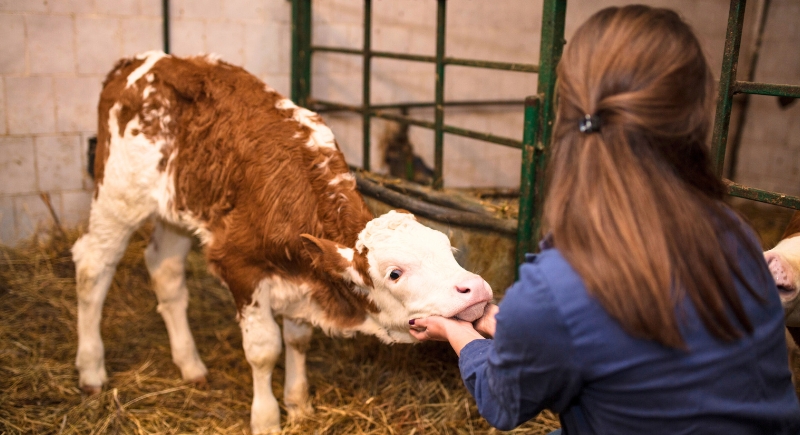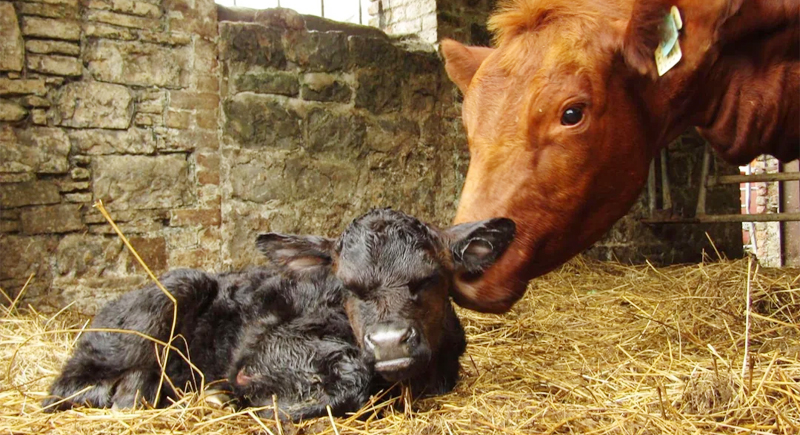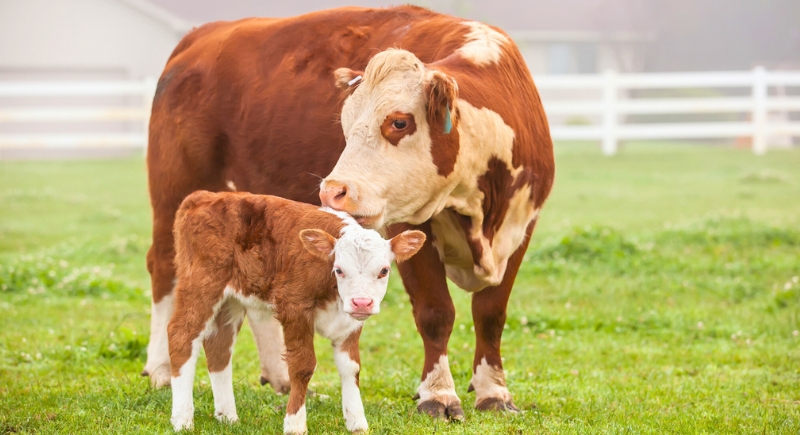This Pet Cow Just Became a Mom and the Photos Are So Wholesome
You don’t expect to scroll past a birth announcement on Reddit, but that’s what happened when u/Modern-Moo posted about Chunk, their pet cow. The pictures showed a quiet scene: a cow lying in the straw with her newborn calf right beside her.
What made it resonate was the context. Chunk isn’t part of a dairy line or a feedlot herd. She grew up as part of a family, with people who treated her as more than livestock. Seeing her step into motherhood gave a sense of continuity to her story.
Chunk Grew Up with Human Care and Space to Thrive

Image via iStockphoto/Viktor Cvetkovic
What most people don’t know is that Chunk began life in rough shape. Her owner found her cold and unresponsive as a newborn. They spent hours reviving her with hot water bottles until she regained enough strength to return to her mother.
Eventually, she became noticea anbly larger than the other young cows in the herd. In a school project, she weighed in at over 100 kilograms more than her closest sibling. But her size never kept her from being handled gently.
The Calf, Chip, Arrived Strong and Unusually Large

Image via Reddit/Eyebleach
Chip was born just two days before the post appeared, a sturdy calf with an alert look from the start. His size made the delivery a challenge, though not beyond what Chunk could have managed on her own. In the photos, he comes across as steady and watchful, already showing the presence of a much older animal.
The name “Chip” quickly attached itself to him, a natural extension of his mother’s name and a hint at the growth everyone expects. It fits the way he carries himself in those first images, where his expression feels almost deliberate, as if he’s weighing the world from his bed of straw.
Chunk Nurses, Watches, and Comforts Her Calf Without Interference
The mother cow has full access to her calf and spends her time nursing her child, resting beside him, and keeping an eye on their surroundings. This uninterrupted bond is rare in commercial farming. In standard dairy systems, calves are usually removed within 24 hours so the milk can be collected and sold.
Research and firsthand accounts show that various mother cows vocalize for days after the separation; they even pace or refuse to eat. That isn’t the case here because Chip remains with his mother, and she responds to him with focus and physical care.
Maternal Behavior in Cows is More Complex Than Many Realize

Image via iStockphoto/emholk
Most people don’t think of cows as socially complicated animals, yet research and sanctuary observations show the opposite. They build lasting bonds within herds, and maternal ties can continue for years. Mothers guide their calves in learning herd behavior and respond protectively when they sense threats.
Sanctuaries have even seen cows stand between approaching vehicles and their calves or adopt orphaned young. Grooming is central to these relationships, with mothers using their tongues to clean coats and faces, which reinforces both health and connection. Many herds function under matriarchs, who are basically older females influencing group decisions and stability.